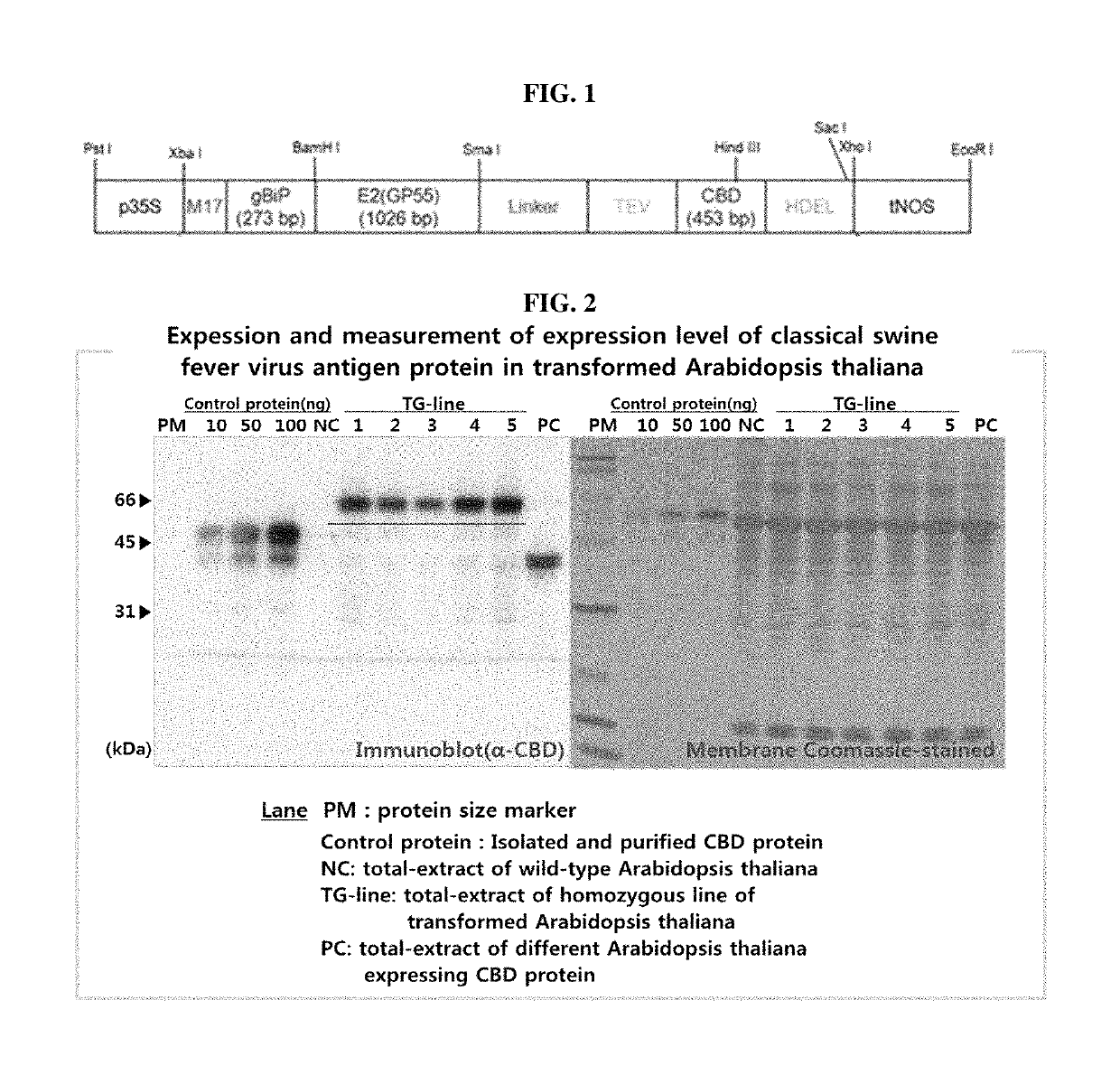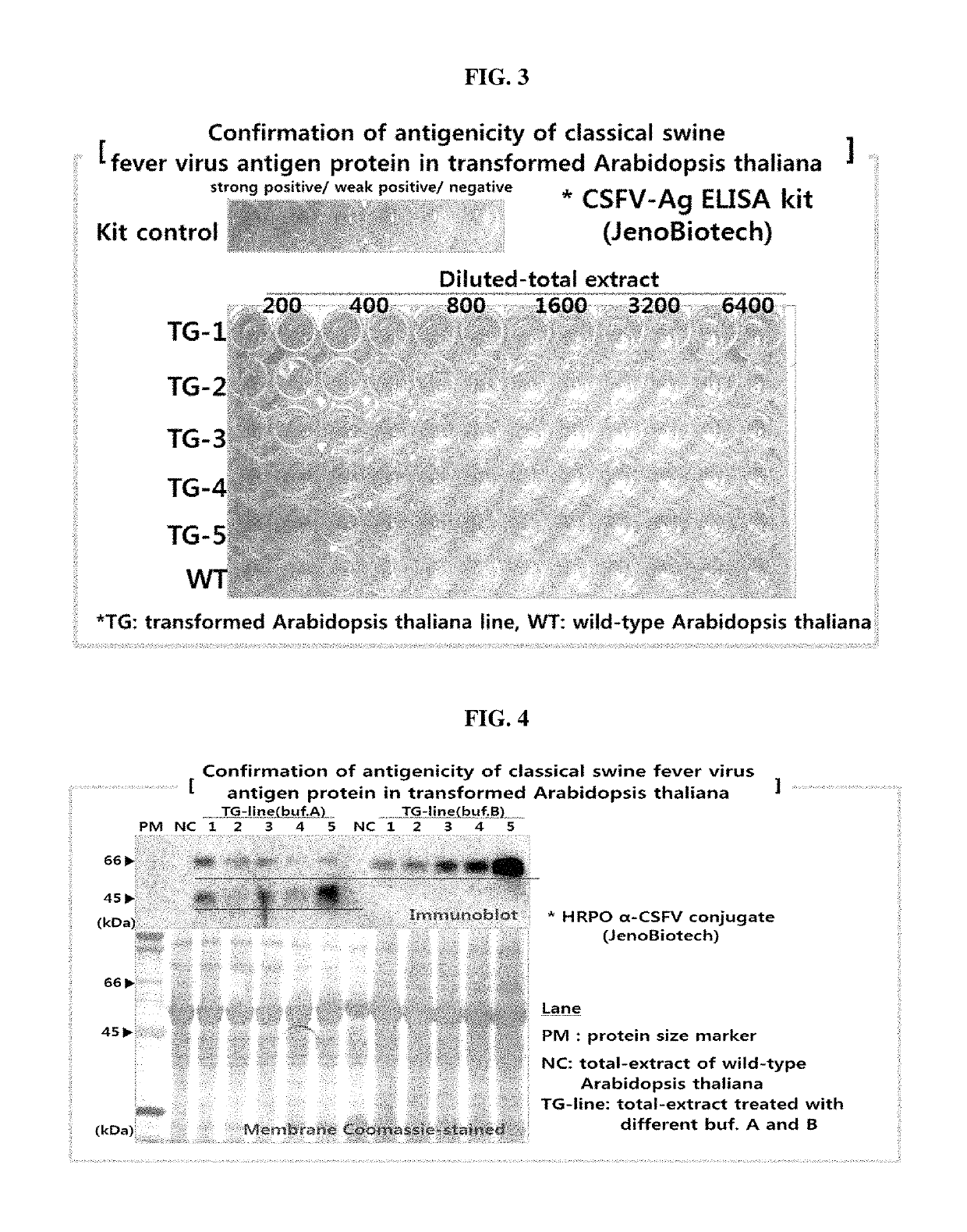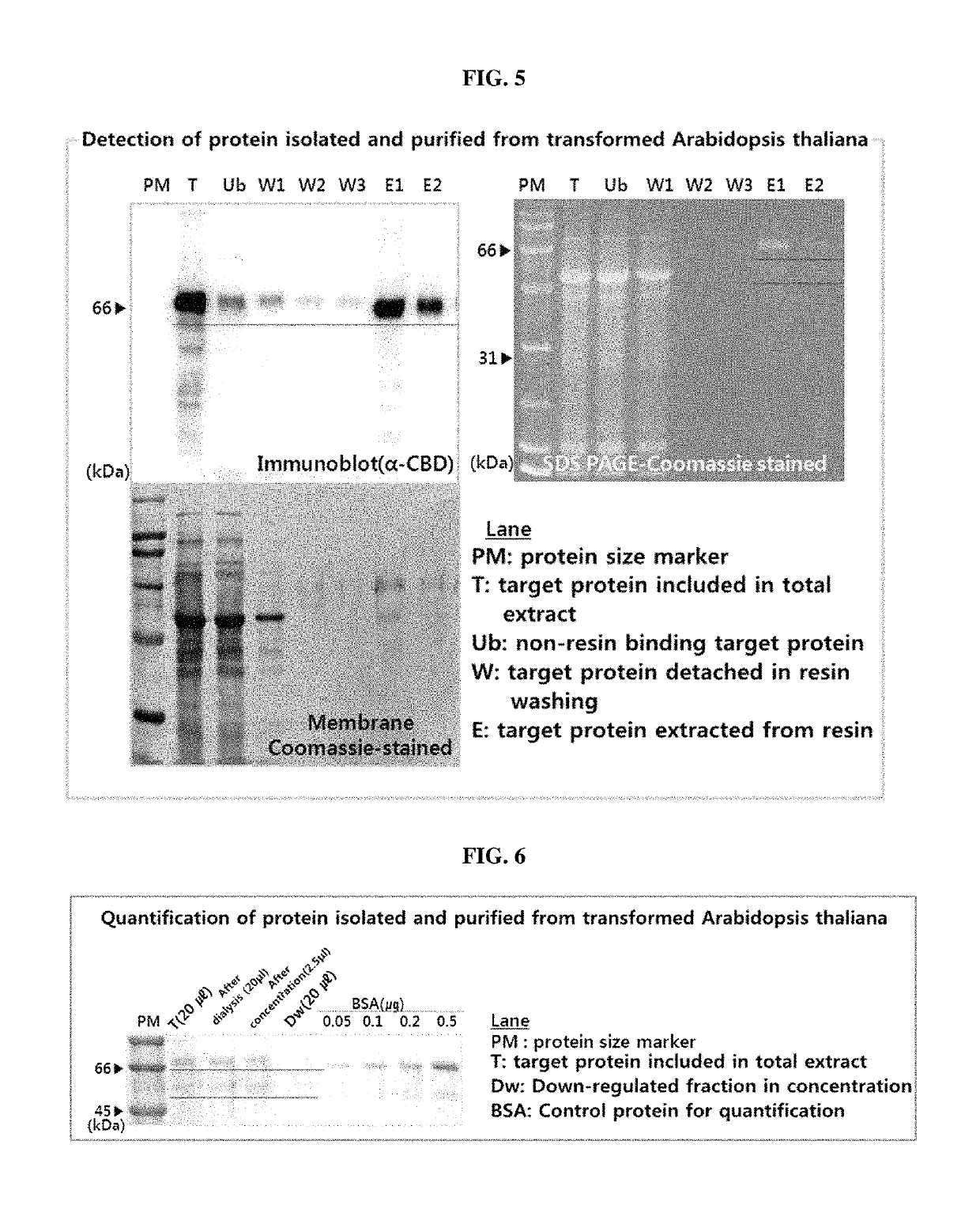Vaccine composition for classical swine fever from plant and manufacturing method thereof
a technology of classical swine fever and composition, which is applied in the direction of antibodies, medical ingredients, peptide sources, etc., can solve the problems of insufficient success in obtaining useful bioactive substances (medically useful proteins, vaccines and industrially valuable enzymes, etc.) from a plant with high efficiency, and achieves high efficiency and high safety and stability
- Summary
- Abstract
- Description
- Claims
- Application Information
AI Technical Summary
Benefits of technology
Problems solved by technology
Method used
Image
Examples
example 1
Construction of Recombinant Vector Comprising GP55 Gene of Classical Swine Fever Virus
[0083]In order to construct a recombinant vector having a GP55 gene of a classical swine fever virus to produce a classical swine fever virus antigen protein in a plant with high efficiency, the following experiment was performed.
[0084]More specifically, as shown in FIG. 1, a recombinant vector in which a CaMV 35S promoter; 5′ UTR(M17) (SEQ ID NO: 3); a nucleotide sequence a chaperone binding protein (BiP) protein (SEQ ID NO: 4); a nucleotide sequence the GP55 protein (SEQ ID NO: 1); a nucleotide sequence a CBD protein (SEQ ID NO: 2); and a nucleotide sequence a His-Asp-Glu-Leu (HDEL) protein are contained in a pBI121 vector was constructed.
[0085]The GP55 protein is one of the E2 antigen domains of CSFV, the 5′ UTR(M17) was used to increase an amount of a synthesized protein, and the BiP protein was used to translocate a target protein to an N-terminal endoplasmic reticulum using a genomic DNA sequ...
example 2
Preparation of Transformed Plant Expressing Fusion Protein Comprising Antigenic GP55 Protein of CSFV and CBD protein
[0086]To prepare a transformed plant expressing a recombinant fusion protein comprising an antigenic GP55 protein of CSFV and a CBD protein, the following experiment was performed.
[0087]More specifically, Arabidopsis thaliana expressing the recombinant fusion protein comprising the GP55 protein of CSFV and the CBD protein was prepared by an Agrobacterium-mediated transforming method for the recombinant vector constructed in Example 1. Since the recombinant vector of Example 1 has resistance to kanamycin in a plant, following the selection of the transgenic Arabidopsis thaliana, a kanamycin resistance test and western blotting using an antibody for CBD were performed to confirm expression of the recombinant fusion protein. Also, expression of a target protein in Arabidopsis thaliana and quantification of an expression level are shown in FIG. 2.
[0088]As shown in FIG. 2, ...
example 3
Confirmation of Antigenicity of GP55 Protein of CSFV Prepared in Transformed Plant
[0089]To confirm antigenicity of the GP55 protein of CSFV in the recombinant fusion protein comprising the antigenic GP55 protein of CSFV and the CBD protein, derived from the transformed plant prepared in Example 2, the following experiment was performed.
[0090]More specifically, homozygous seeds with stable expression of a target protein were ultimately ensured through generation advance of the transformed plant prepared in Example 2, an expression level of the target protein was quantified for each seed line to determine the line to be used in the experiment. The seeds of the determined line were cultured to obtain a plant, a protein was extracted using an extraction buffer commonly used in protein extraction for ELISA. Antigenicity of the GP55 protein of CSFV in the fusion protein of the antigenic GP55 protein and the CBD protein, derived from the transformed plant prepared in Example 2, was confirm...
PUM
| Property | Measurement | Unit |
|---|---|---|
| total volume | aaaaa | aaaaa |
| fluorescence-activated cell sorter | aaaaa | aaaaa |
| stability | aaaaa | aaaaa |
Abstract
Description
Claims
Application Information
 Login to View More
Login to View More - R&D
- Intellectual Property
- Life Sciences
- Materials
- Tech Scout
- Unparalleled Data Quality
- Higher Quality Content
- 60% Fewer Hallucinations
Browse by: Latest US Patents, China's latest patents, Technical Efficacy Thesaurus, Application Domain, Technology Topic, Popular Technical Reports.
© 2025 PatSnap. All rights reserved.Legal|Privacy policy|Modern Slavery Act Transparency Statement|Sitemap|About US| Contact US: help@patsnap.com



